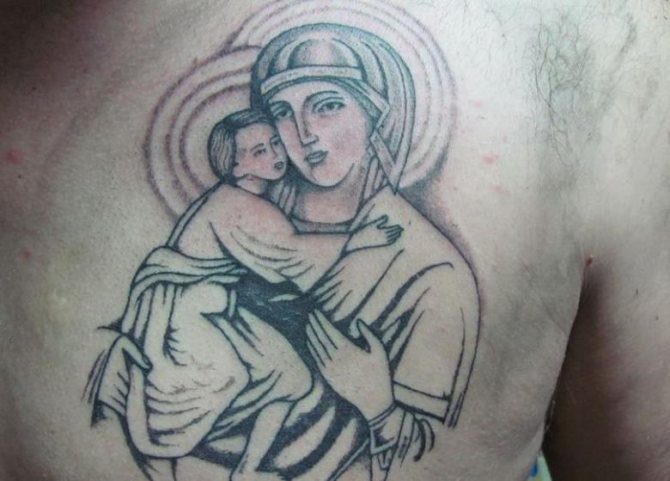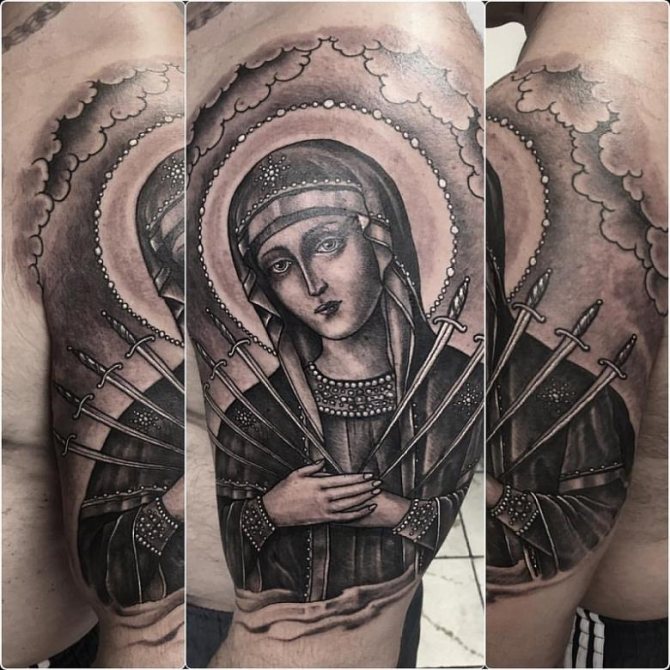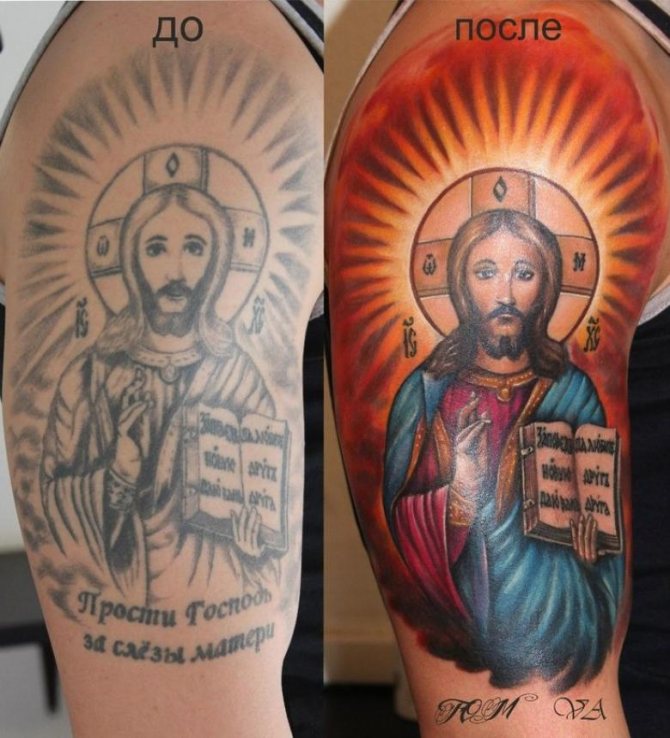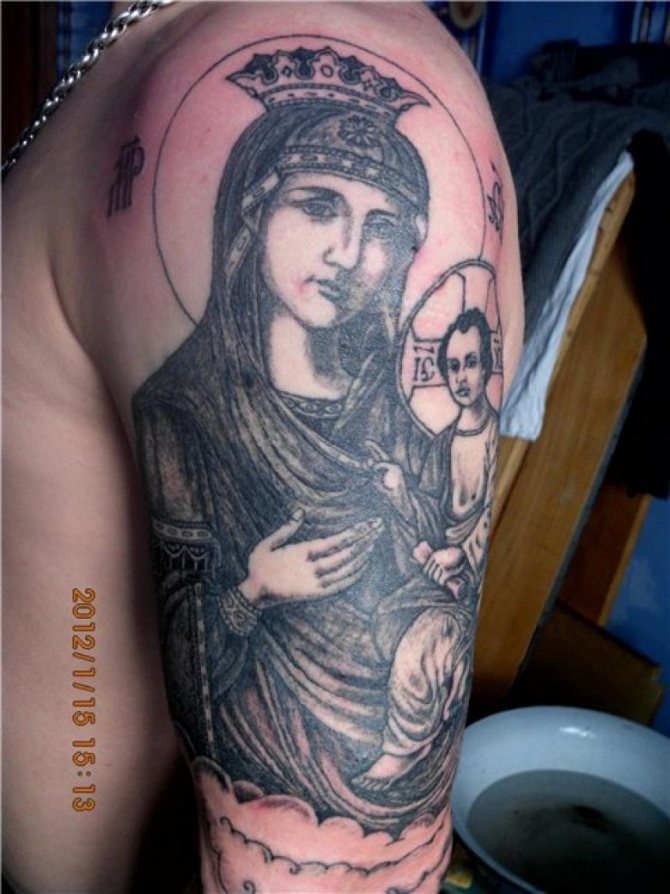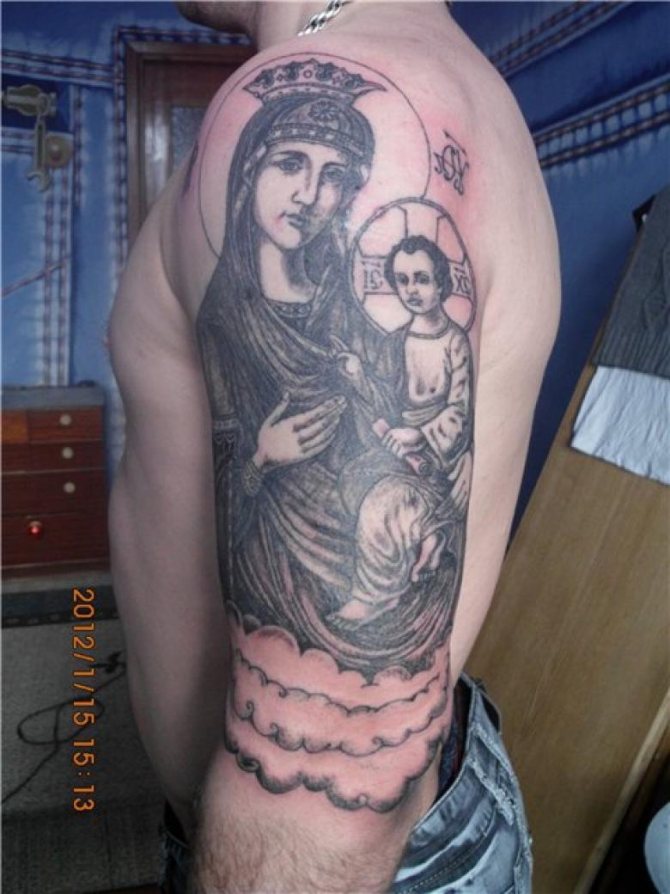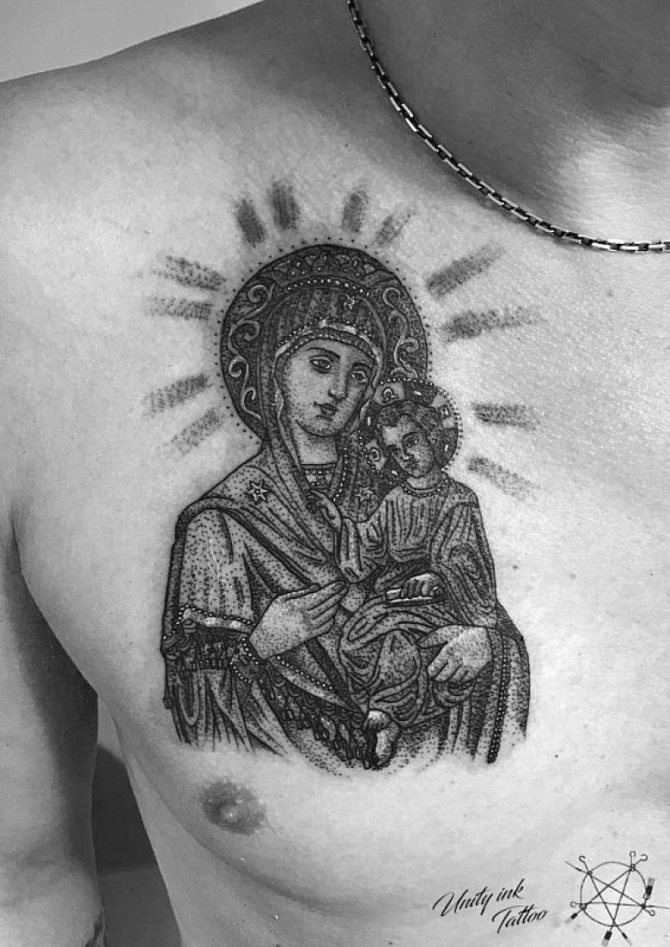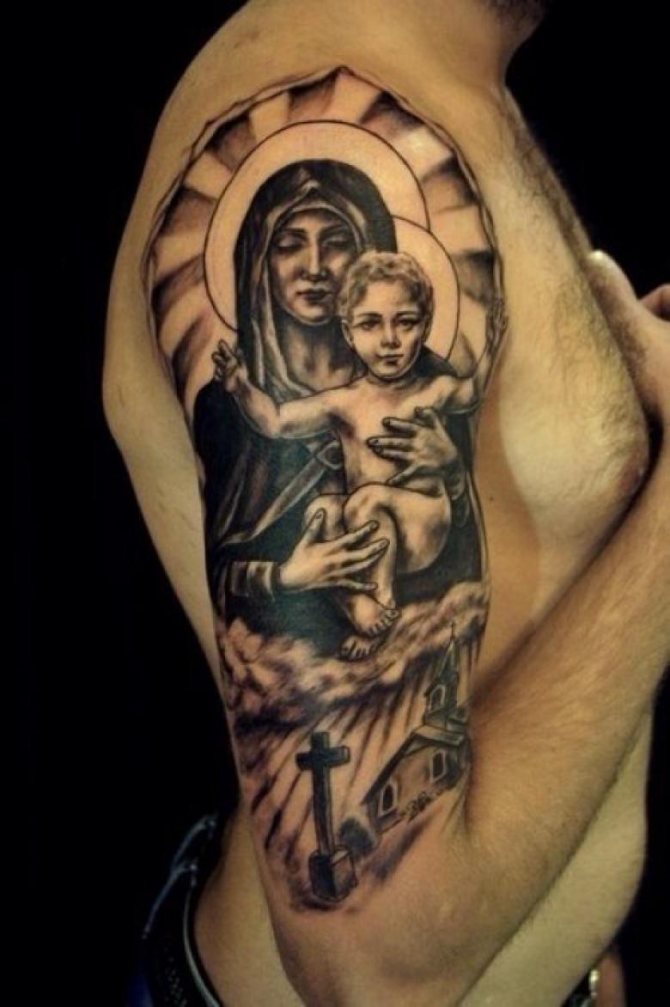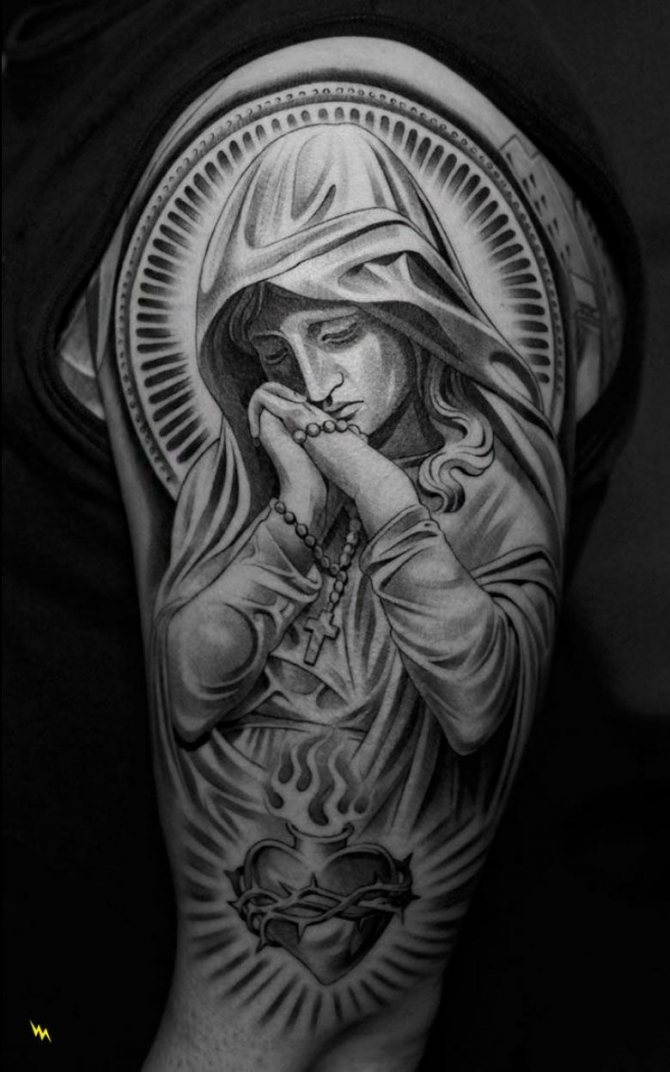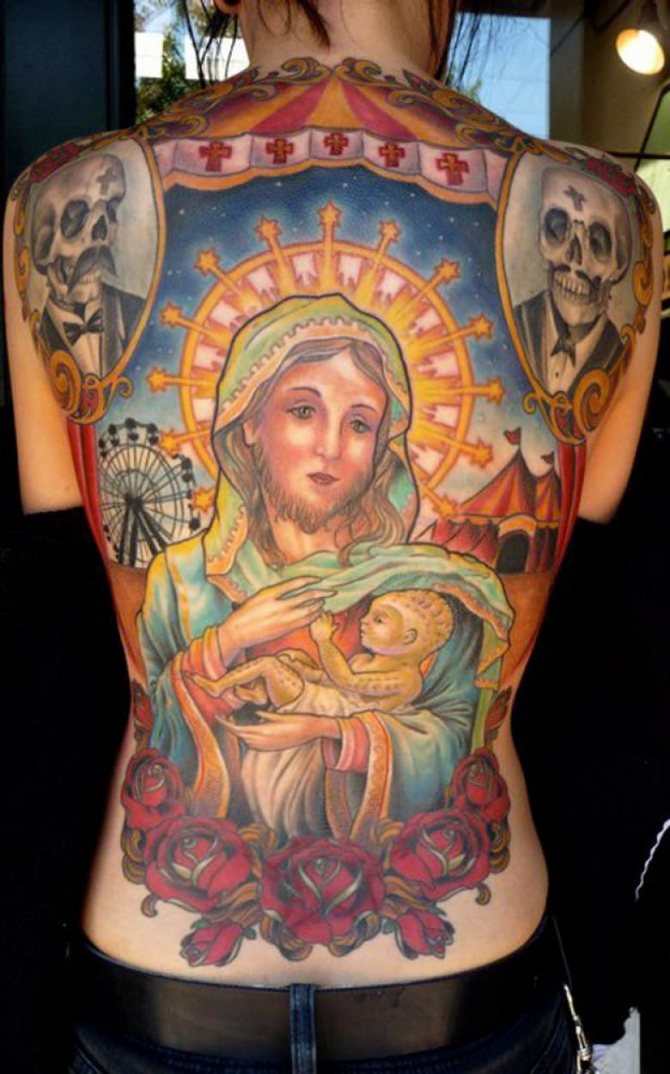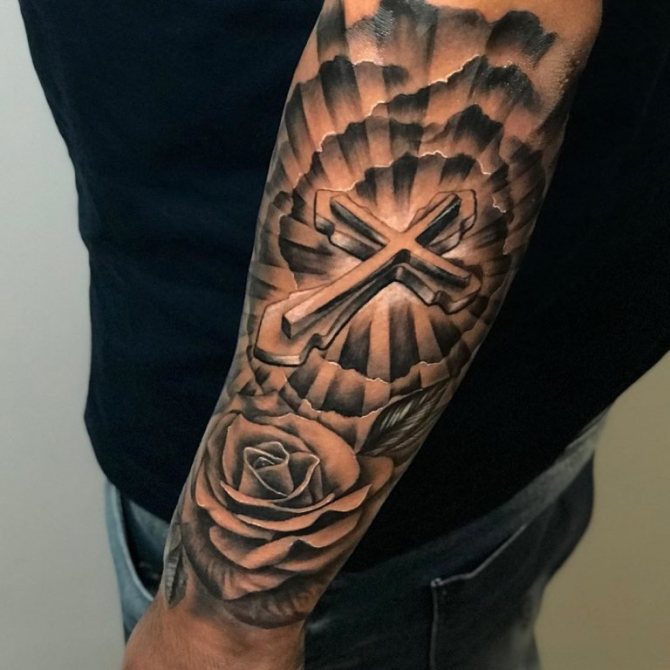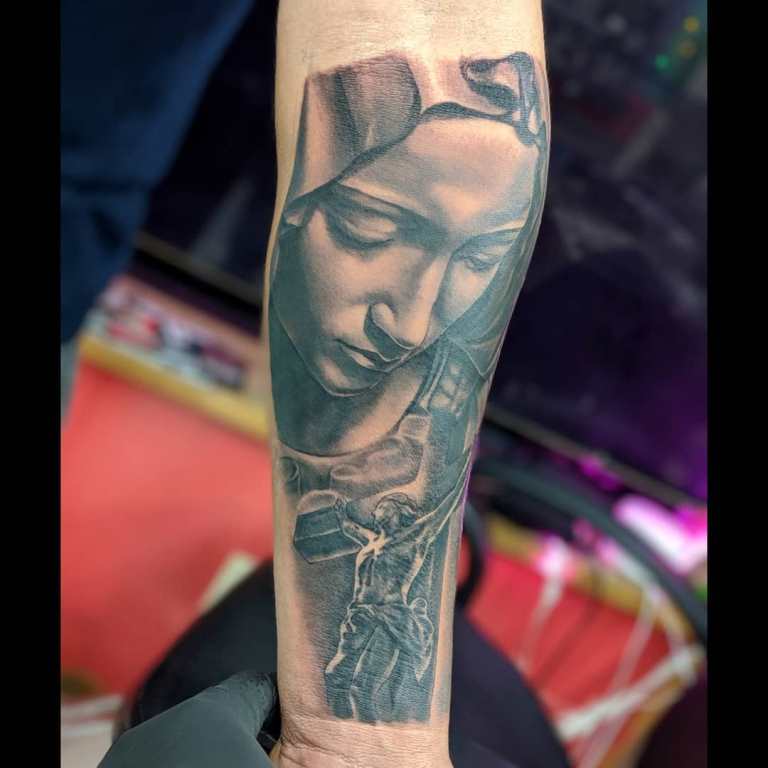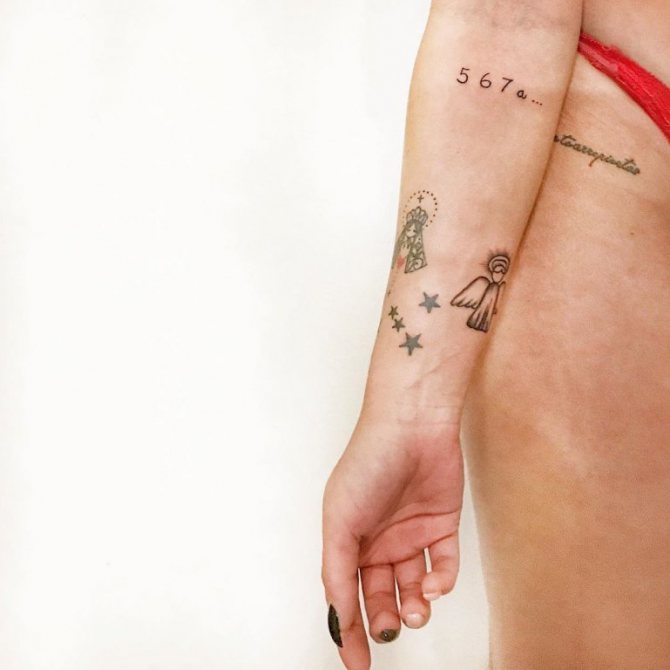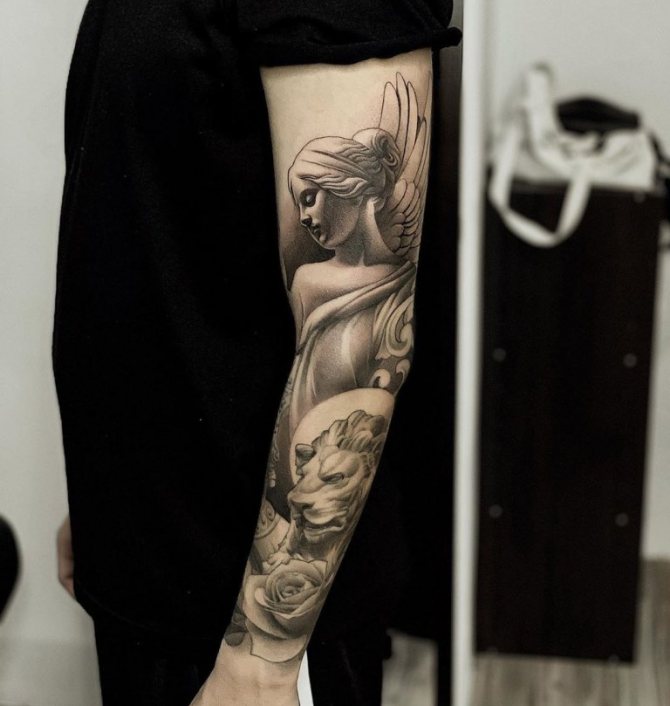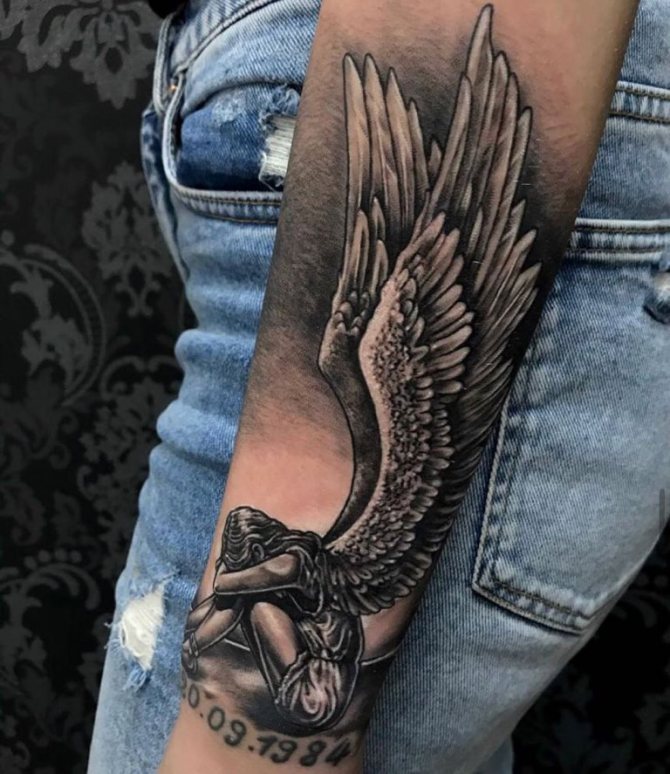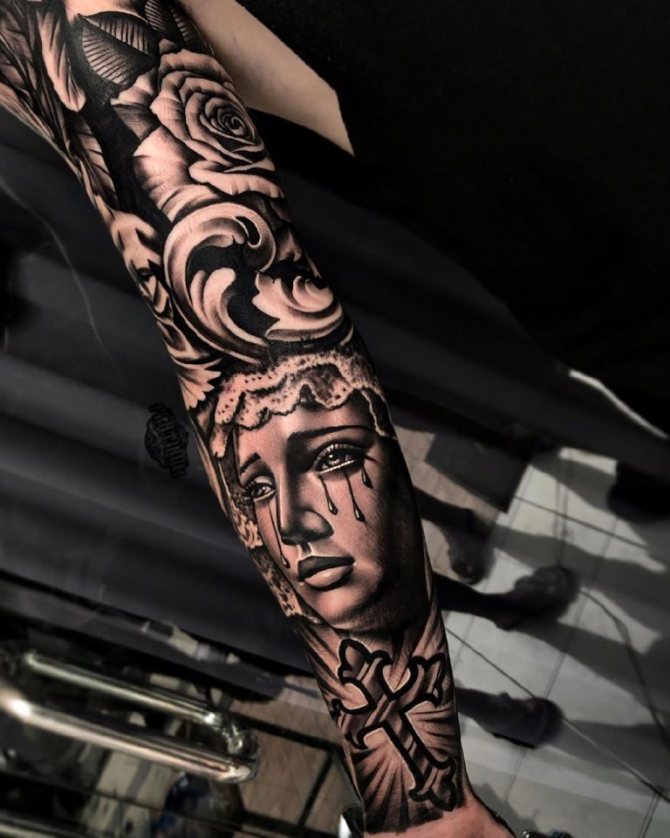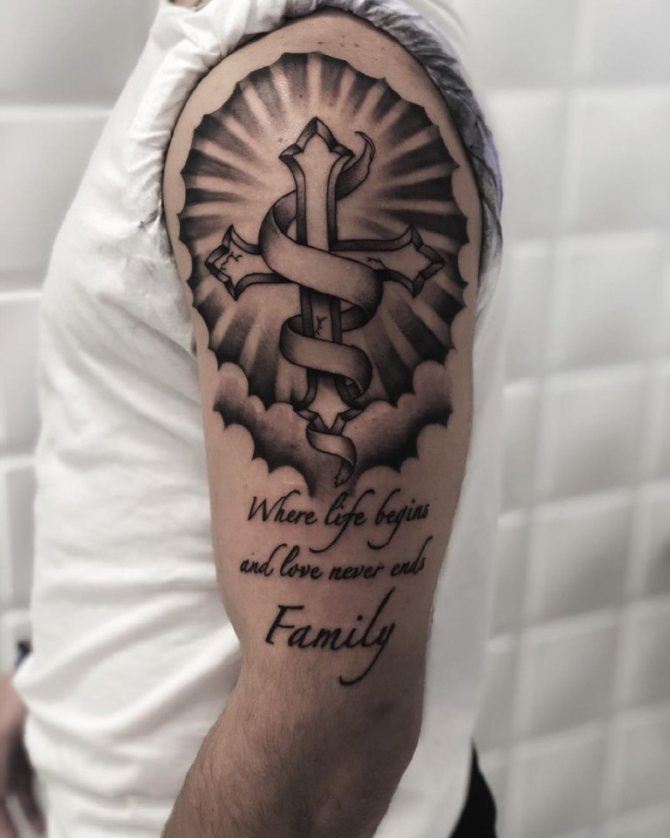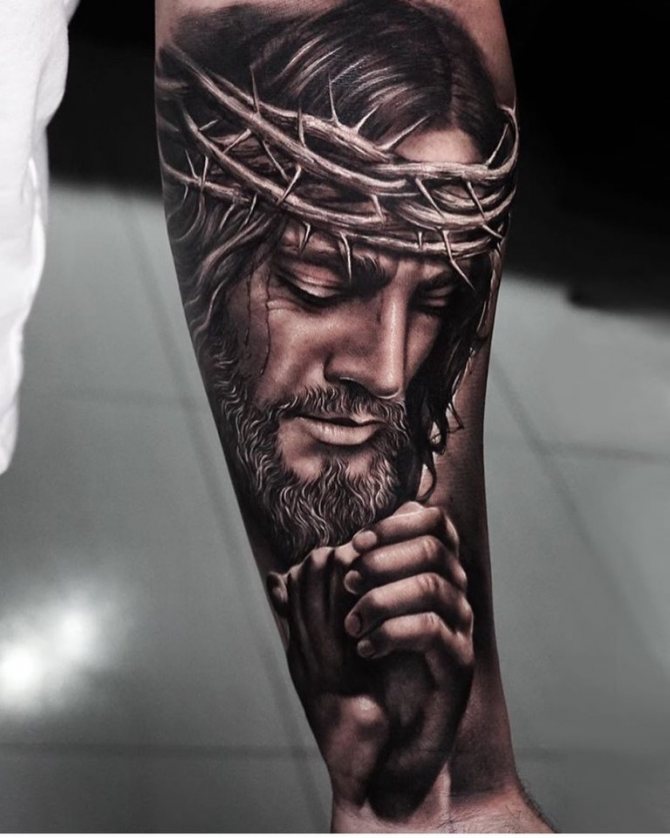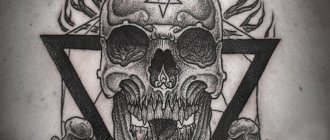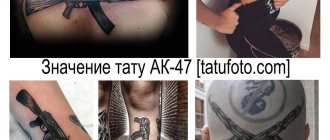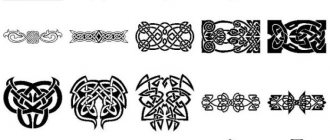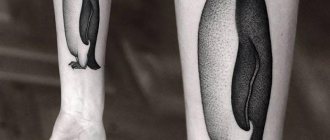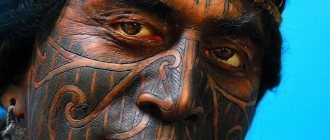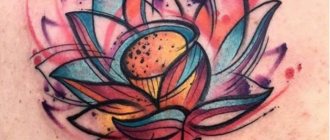In ancient writings are often mentioned tattoos and inscriptions that people made on their bodies as a symbol of faith, or as an object of protection from evil spirits. If we talk about the Orthodox tattoos, it is mainly the faces of saints, a cross, or words from the Bible. The most popular church tattoos are images of the faces of saints, angels and inscriptions. Orthodox tattoo shows the confessional affiliation of the bearer. Therefore, if you decide to make a religious tattoo, you must be sure that you will not change your world view.
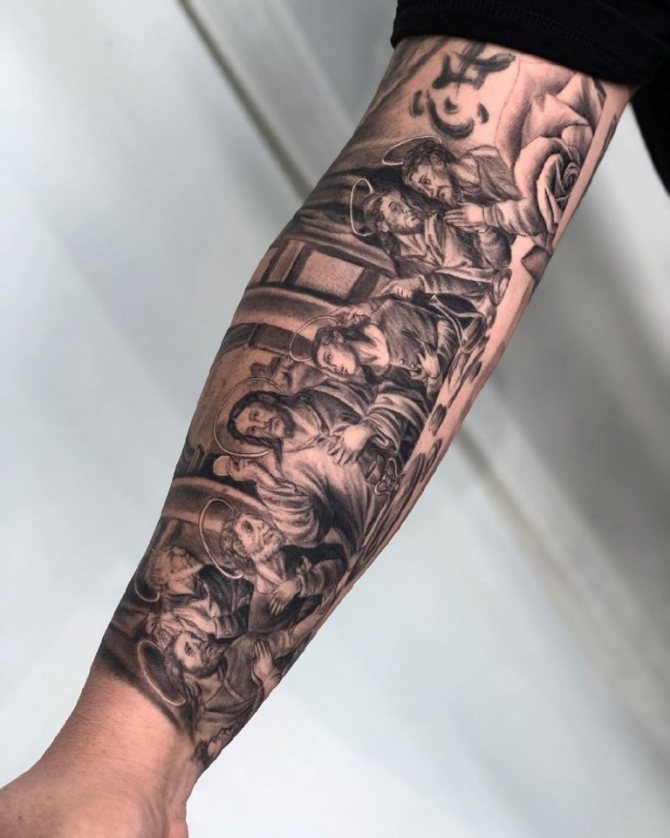
Christian tattoos: meaning
In Christianity, as in many other religions, writings on the body are mentioned in ancient writings. For example, in the Old Testament there are references to "tattooing writings" that people made as amulets. However, the Old Testament Book of Leviticus mentions the prohibition of tattooing writings on oneself.
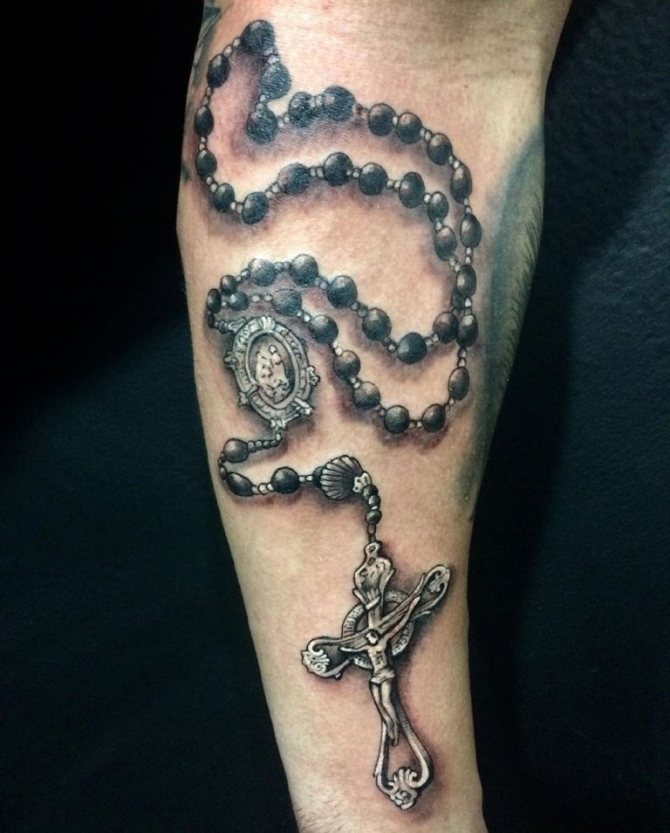

In the Book of Revelation of John the Evangelist there is a prohibition against the "Marks of the Beast" on one's body. It is not clear whether these prohibitions can be considered in any way related to tattoos as we understand them in the modern world. Also, we can consider that the Bible prohibits tattoos for the reason that the human body is not uncommonly called the temple of God and it can not be desecrated at will.
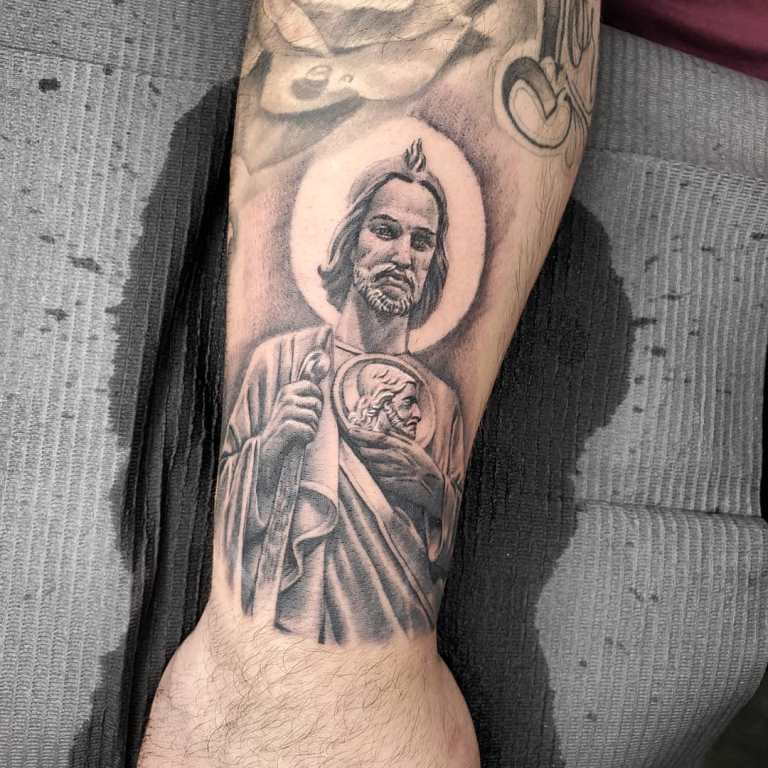

Nowadays, Christian-themed tattoos are a popular trend in body art. Each tattoo has its own individual meaning and carries a special meaning for Christians. Let's look at them in more detail.
Cross
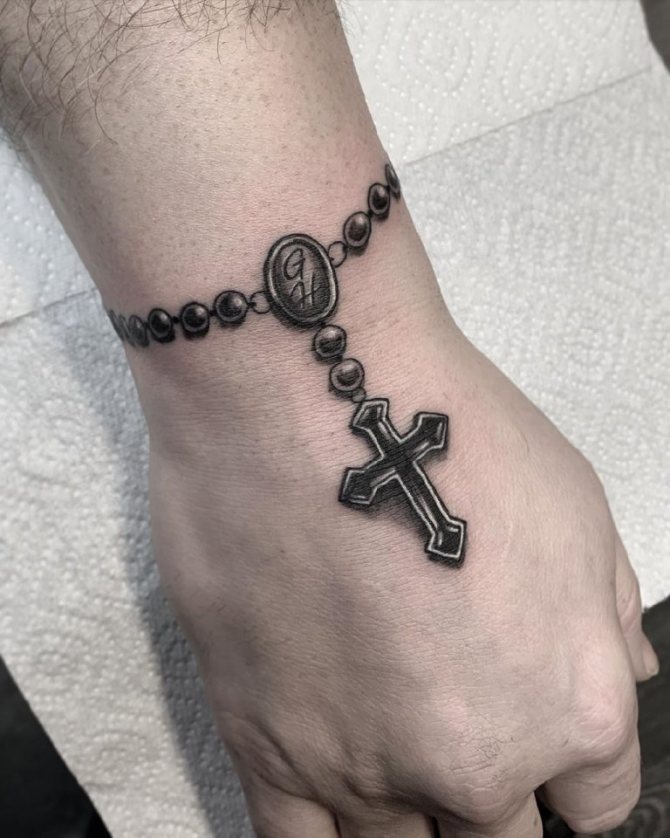

The cross was first applied by knights. It was believed that he brought good luck for the warrior and protected him in battle. Basically, this religious sign prickled on the back, heart and chest. Modern tattoo artists tattoo several types of crosses:
- with a rosary - indicates a great faith of the wearer;
- With a stone - indicates the search for his path, the meaning of life;
- Katinsky - a symbol of remembrance of the dead;
- Celtic - symbolizes the connection of everything in the world to each other;
- chivalric - sign of strength, honor;
- Cross of Peter - represents faith in God, respect;
- Baptismal - speaks of the immortality of the soul;
- on the back - faith in karma.
Angel
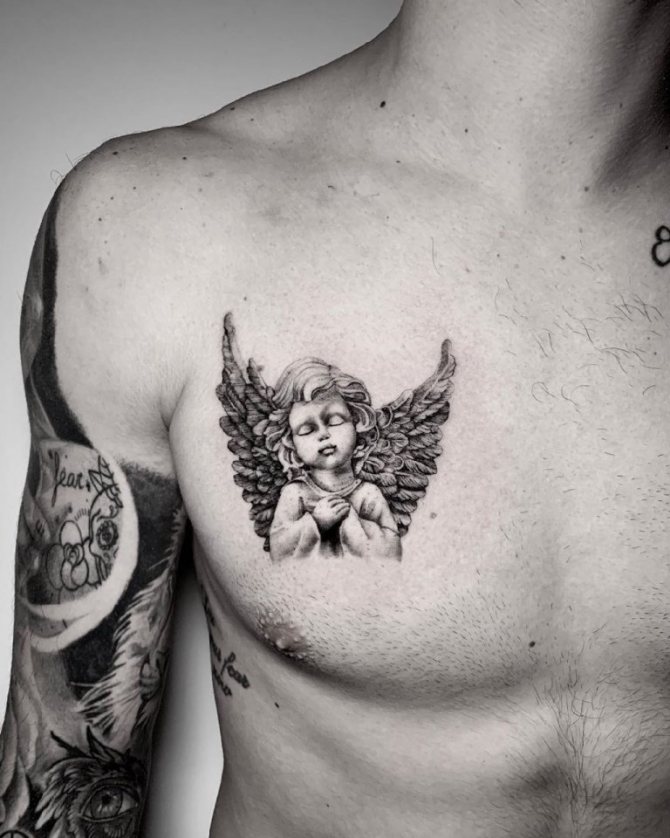

This is a rather important Orthodox drawing, as it denotes faith in God, devotion, purity of the soul. The following types of this tattoo are popular:
- fallen angel - signifies a person's repentance for his sins;
- Angel of death - can symbolize the readiness of a person to die, or on the contrary, the fear of an imminent death;
- Cherub - manifestation of love, purity, innocence;
- Archangel - protection from evil forces.
Symbols
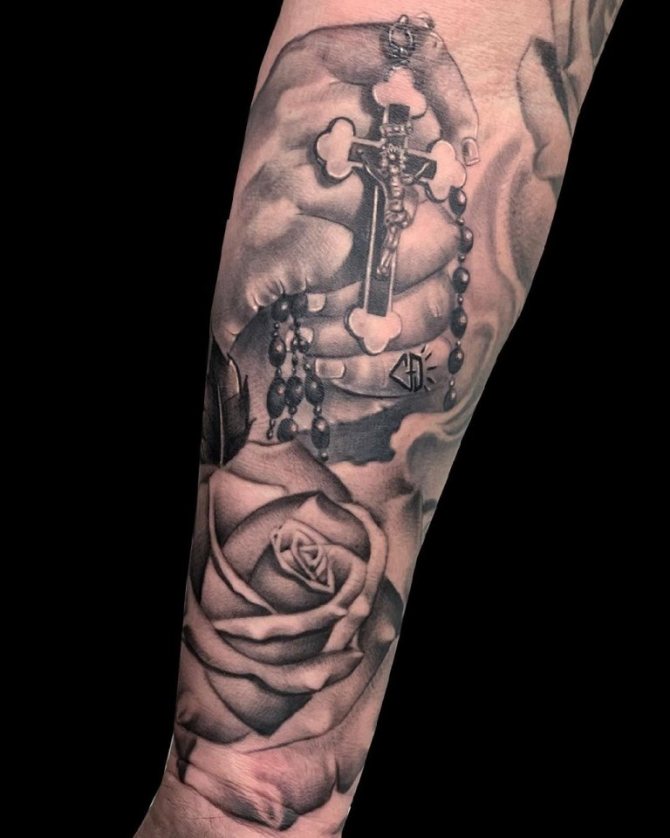

Various objects connected in one way or another with religion can act as symbols:
- rose - a sign of purity, purity, martyrdom;
- the lamb - a symbol of submission and sacrifice;
- anchor - tribute to the dead;
- dove - giving hope, faith in the holy spirit.
Virgin Mary
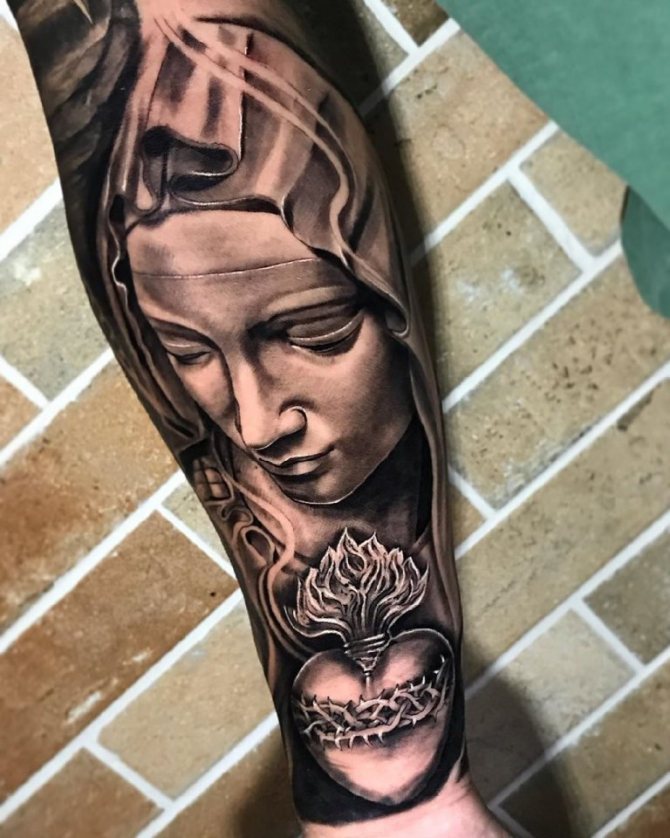

The image of the Virgin Mary shows the human striving for perfection, purification from sins, approaching God.
Angel and demon
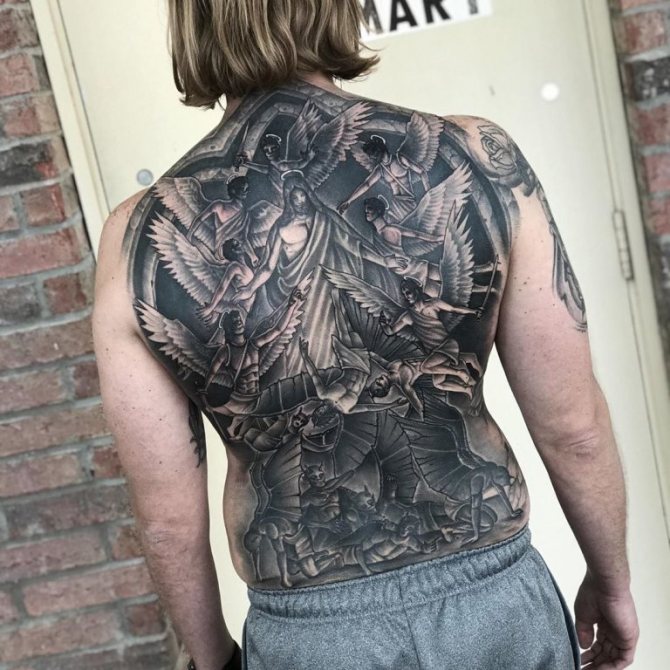

This tattoo shows two sides of a person supposedly fighting for control of the owner's character.
The meaning of the icon for people - from antiquity to the present day
Tattoos with images of icons belong to the religious. On the body to create beautiful pictures was popular long ago - in the centuries. People wanted to get closer to God, to be spiritually enlightened.
However, the Church has a negative attitude towards tattoos, even if depicted on the body of the saints.
Orthodox citizens who consider themselves modern and do not adhere to the ancient, ancient traditions, often tattoo icons. But they create them In places hidden from the eyes of others.
In different countries, tattoos of this type are treated differently.
Let us tell you what beliefs exist:
- In pagan times. Tattoos were symbols of a cult. Leaders, pagans "stuffed" tattoos of pagan gods, or inscriptions that were associated with them. No one else had the right to tattoo.
- During the Crusades. had the right to tattoo icons by knights who had been on campaigns in the Holy Land. At first "stuffed" crosses, but with the development of skill began to create images of saints.
- In the Middle Ages. people tried to put images on their bodies: the Apostle Peter, the Virgin Mary, the Mother of God, Jesus Christ, George the Victorious.
- Tattoos of icons came into vogue from a not-so-distant world - from prison. Prisoners lacked spirituality and education. They started coming up with interpretations of important church details. For example, in prison tattoos. The icon could symbolize not only spiritual purity and holiness, but also how much time a person had served, how many crimes they had committed, etc. Note that everyone can put in their own meaning, so the meaning of the icon tattoo is not permanent.
- Christians have always been against tattoos. Holy Scripture says: "Do not make cuts on your body and do not tattoo writing on yourself" (Leviticus 19, 28). It is believed that a person's image should not be dirty, remade.
- In the culture of the Oriental people tattoos of saints is very abundant. For example, Buddha is portrayed by all comers, he does not cause negative emotions.
Depending on the religion, the image of a certain icon has different meanings. People doing tattoos of icons tried in ancient times to express their devotion to their faith, to God.
The best places to place an Orthodox tattoo
When choosing a place to place a Christian tattoo, you need to consider the fact that it can be perceived differently by the people around you. Historically, certain body artwork is desirable to place on specific parts of the body. For the most part this has to do with the meaning of the tattoo.
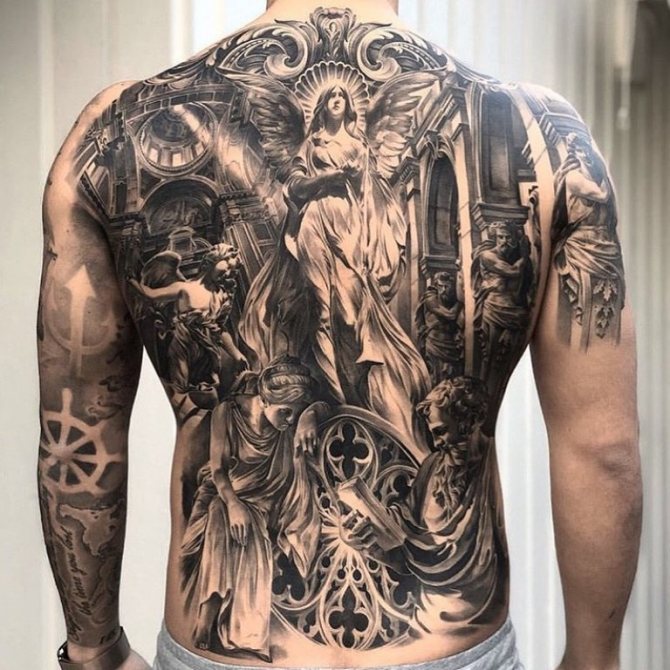

If it had a deeper meaning, it was placed on more visible or meaningful places. If the tattoo described the character of its bearer, it was placed in places not accessible to everyone. The most popular places to get women's and men's religious tattoos:
- Shoulder - most often on the shoulder are tattoos depicting the hands of a praying person. This emphasizes strength and courage. Sometimes there are tattoos of saints on the shoulder, for example Jesus;
- The forearm - mainly on the hand are pecked heaven's gates, the faces of the saints, Jesus Christ. Drawing in this place denotes the strength of the spirit, the attraction to God;
- The wrist is an ideal drawing for this part of the body - a small Christian attribute. Mostly doves, anchors, roses, lambs are printed on the wrist. Rarely, there are crosses;
- Palm and hand - the ribs of the palm are often printed with religious symbols. Sometimes passages from religious scriptures are placed on the palm;
- Neck - most often crosses, Orthodox attributes and inscriptions are placed on the neck;
- Chest - large tattoos are placed on the chest. Basically, these are inscriptions, wings, tattooed icons. It is believed that the picture on the chest is a strong talisman for the person.
- Side - crosses, angels, saints are tattooed on the sides. Tattoo on the side can denote confessional and ethnic affiliation;
- Thigh - Orthodox tattoos are forbidden in this area, as they are considered to carry an intimate meaning;
- Back - the most popular tattoo on the back is the wings of an angel. It is not uncommon to see church domes, the faces of saints. Such a tattoo symbolizes the burden carried by the person;
- Scapula - on the scapula are mostly printed symbols, text;
- Foot - Orthodox tattoos on the leg are decorative in nature;
- Tattoo sleeve - this type of image of Christian tattoos is very popular. On it place almost all kinds of Orthodox tattoos.
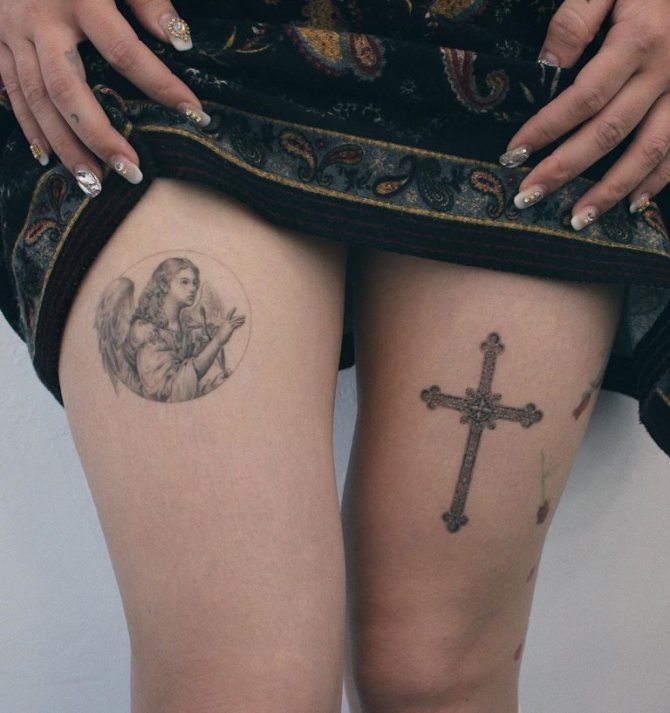

Types of tattoos with the Mother of God
Sketches of tattoos with the Blessed Virgin are presented in different types:
- with a cross;
- on the background of the domes of the temple;
- with the baby Jesus;
- praying Madonna;
- The Virgin Mary in mourning.
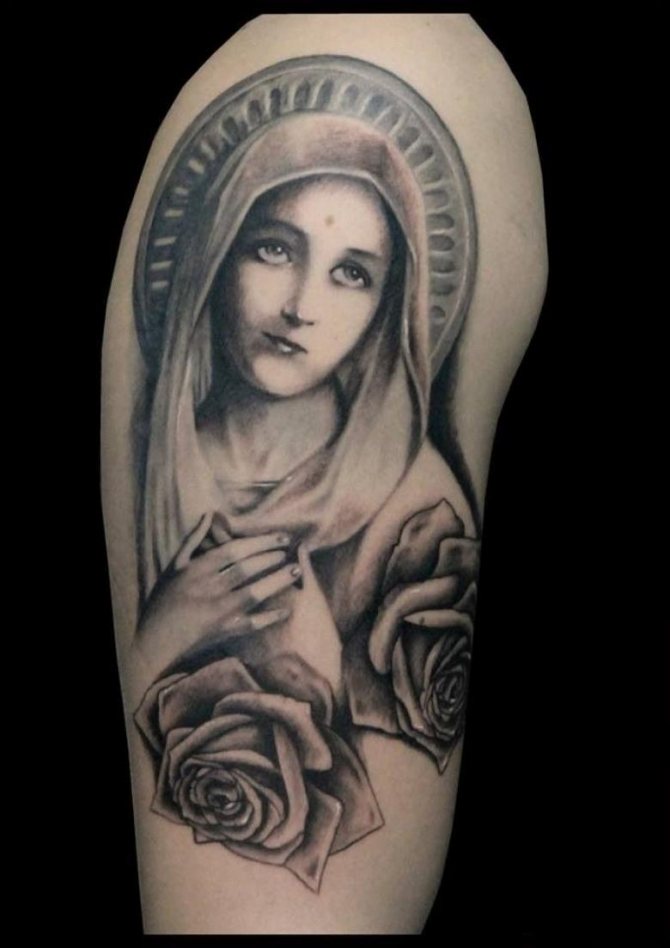

In addition, a cartoon picture of the Blessed Virgin Mary is used.
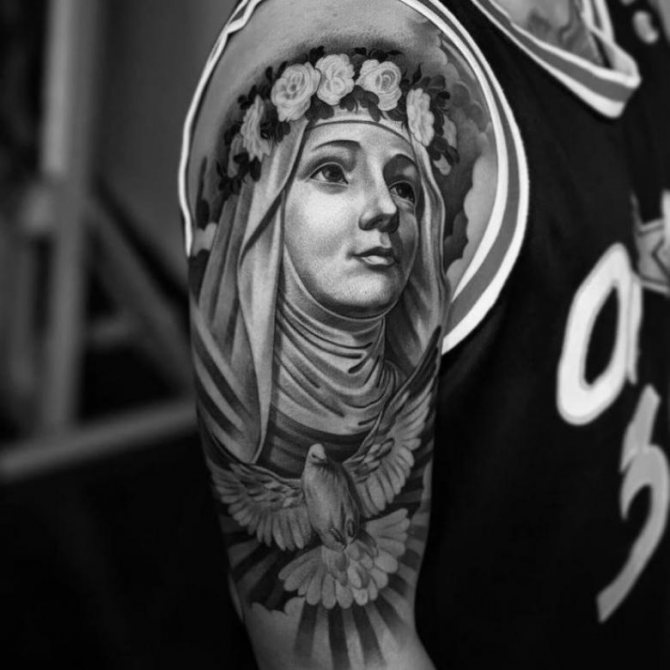

The Blessed Virgin Mary with a cross and on the background of church domes has a prison meaning. Such tattoos are almost always worn by incarcerated men. There is no Christian meaning in them, but only symbols associated with the prison subculture are encoded. Such tattoos are large in size.
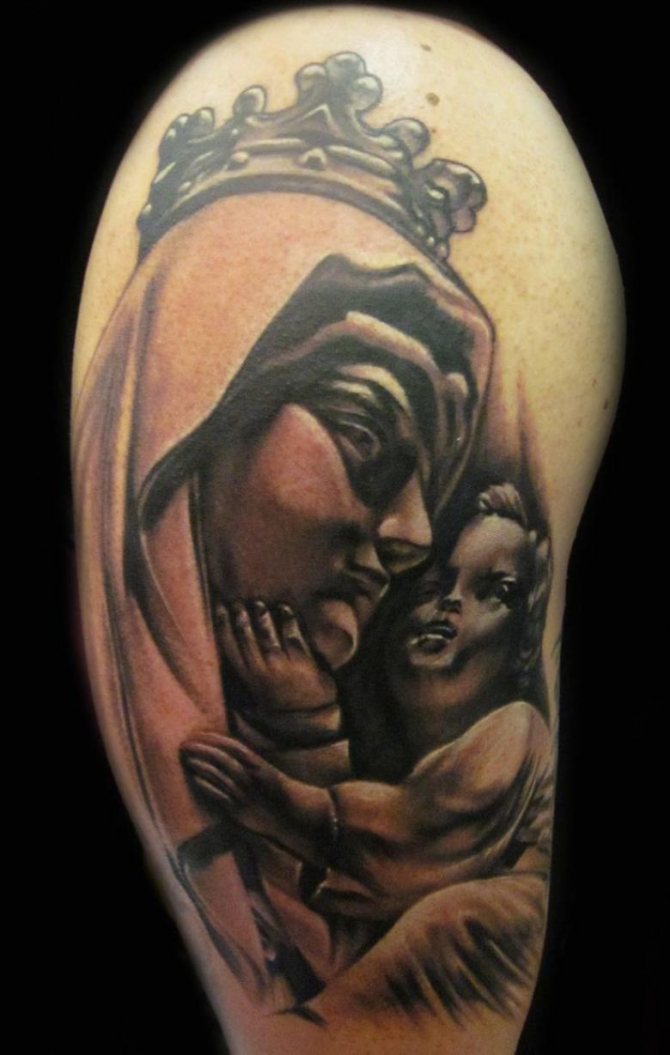

The image with the praying or grieving Mother of God is chosen by believers who have nothing to do with the prison world. Tattoos of this type are made small.
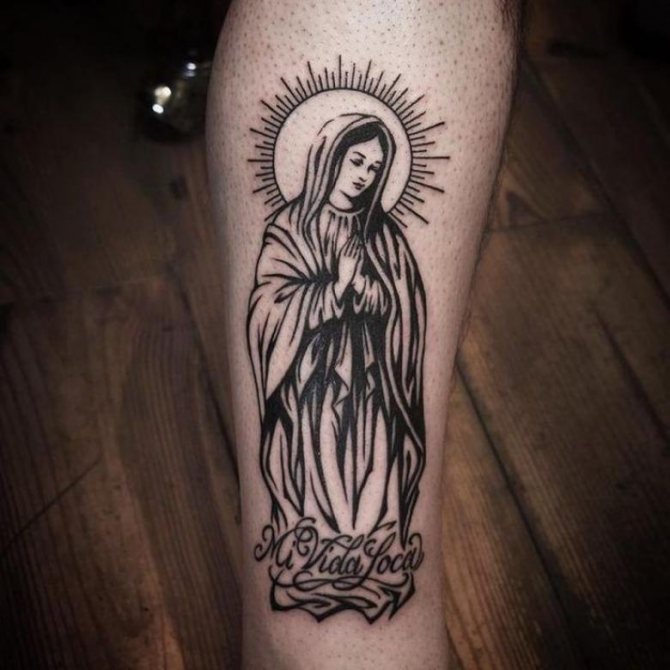

When applying both types of these tattoos, one should consider the places on the body where they are printed on. In both, it is important that the tattoo is applied to a place so that the design is not on public view. Before deciding to get such a tattoo, one should understand the location in which such a design will be imposed.
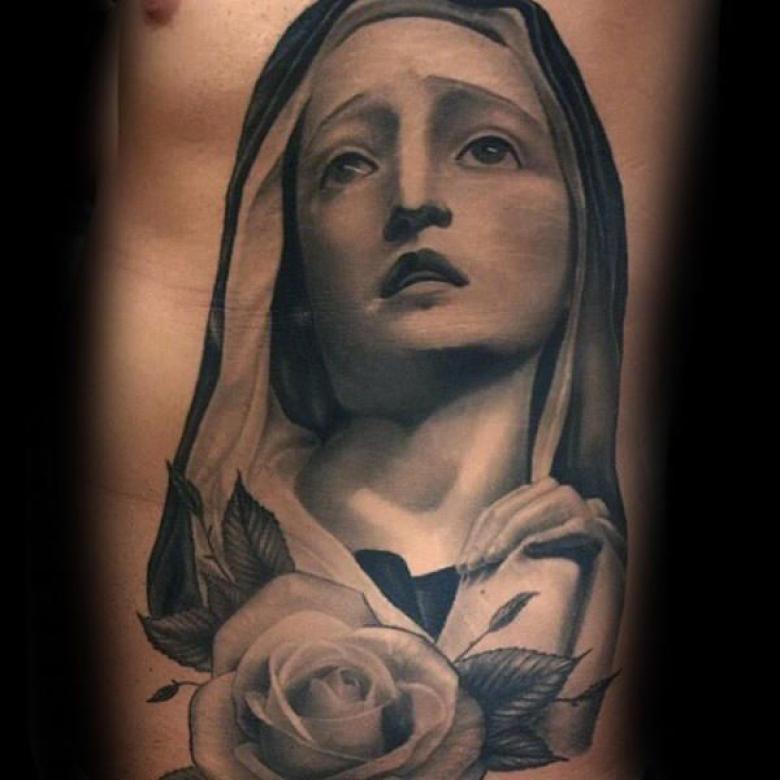

Sketches of religious tattoos
To date, a huge number of religious tattoo designs have been developed. This is due to the variety of religions and related paraphernalia. Each religion has its own unique amulets, sacred things or animals. But while they are similar, there are nuances and distinctive details everywhere. Below are a few examples of religious tattoos.
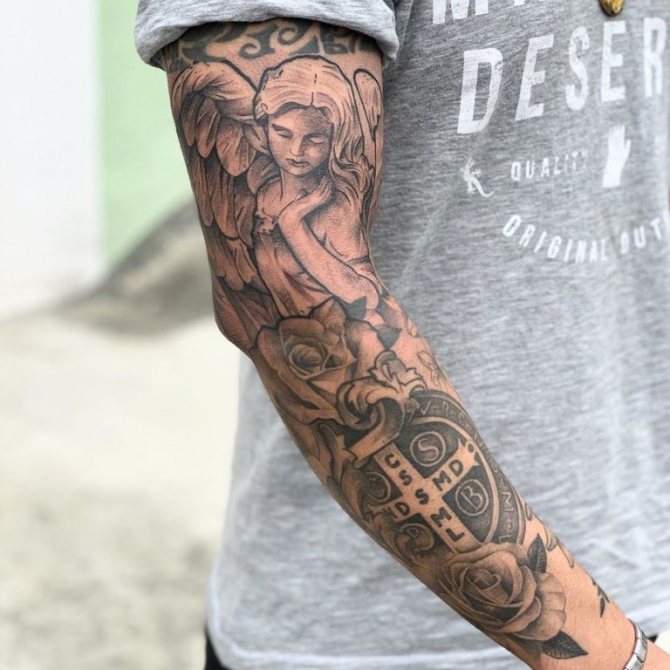

History of Origin
The tattoo began to form its history in the early twentieth century. At that time, many people were sent to the Solovetsky Islands for imprisonment. Most of them were those in whom the Bolsheviks saw a threat. These included church ministers who did not want to go along with the new government. It was here, in the prisons, that the priests, together with some of the prisoners, formed a movement. It was designed to fight atheism.
The authorities, in turn, banned the wearing of crosses and other church paraphernalia. It was then that the prisoners and decided to do on his body tattoo the top of a cathedral or church.
Religious tattoos: photo
When choosing a drawing it is important to consider its hidden meaning, otherwise it will be in vain. It is desirable to think over where the religion tattoo will be located: in a visible place or in a closed one, how it will look and so forth. Below you can acquaint with the photos of the ready works of people who have tattoos of such type.
Who can see such a tattoo?
Tattoo "Domes" inflicts on his body only a certain circle of people. Agree, in contrast to all sorts of butterflies, dragons and other popular drawings, such a tattoo is not so common. This is due to the fact that it is a prison tattoo. A man whose body is depicted domes, church or cathedral is a former prisoner.
If you delve into the literal meaning of this tattoo, you can translate it as "prison is home to a thief." However, it also carries a deeper meaning. In order to understand it, it is necessary to study the history of the origin of the tattoo.
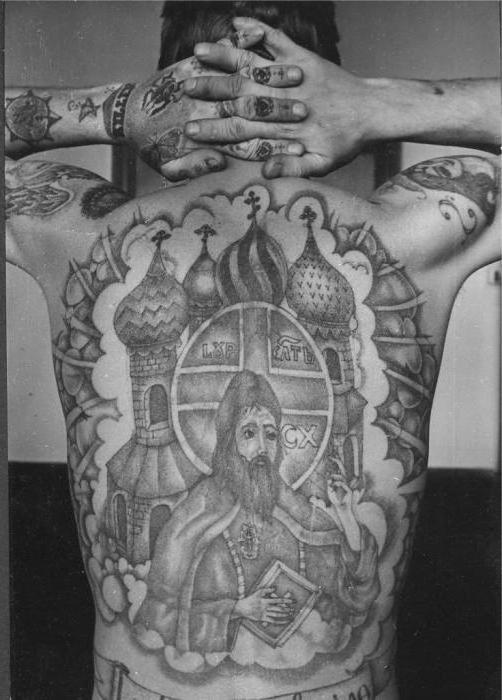

Ways of tattooing in the zone
Previously, such tattoos were not applied themselves, it was usually the work of a master who was found in the prison world. A professional could apply the image even without a sketch, but it was quite expensive. Then the prisoners found different ways to apply tattoos, as they never had any special means. Usually they took a paste from a ballpoint pen, or made their own means, which consisted of soot, urine and sugar. The second option was much rarer. To inject dye, they took staples from books or notebooks and sharpened them on concrete walls, then tied them to a simple match with a thread. But the most excellent variant always remained a medical syringe or a needle with an injected solution.
By the way, the meaning of the above-mentioned tattoo changes if its owner-woman. In such a case, it simply indicates that she was serving time for robbery or theft.
Source
